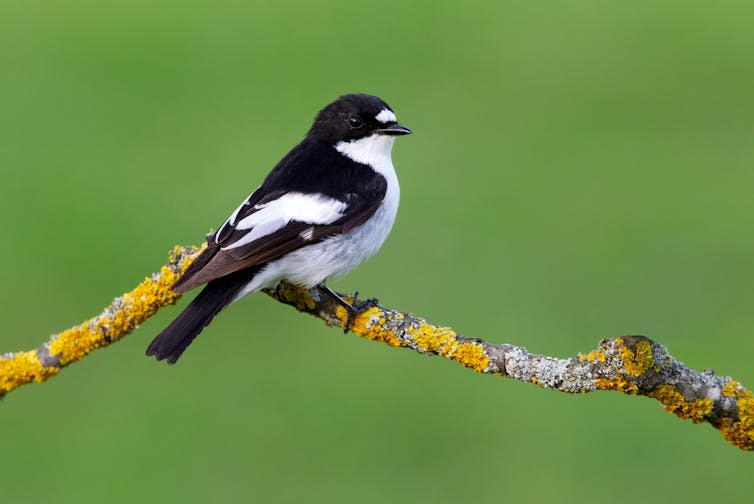With the arrival of spring, an ageless ritual begins again: male birds fill the air with songs, trying to attract mates and defend their territory against other rival males.
But there’s still a lot we don’t understand about how birds learn which sounds to make. Our latest study offers new information and suggests that genes may play a more important role than scientists thought.
In almost half of the world’s bird species, young birds learn by imitating adults’ songs. As birds learn songs from each other, errors inevitably occur, leading to differences in songs between populations of the same species, similar to the formation of dialects in human languages.
Female birds often prefer males that sing songs specific to the local population, as this may indicate that they are well adapted to the immediate environment. Songs are also very important for defending territories. Male birds singing foreign songs often have difficulty seizing territories against local competitors.
This potential role as a mating and social barrier is why there has been a long-standing hypothesis that song differences could lead to the formation of a new species.
But scientists don’t yet fully understand what happens to these song differences when birds move between populations. Imagine you are a local bird and a newcomer arrives singing a foreign song. What’s stopping you from learning this new song? If enough local birds learn the songs of the newcomers, this could eliminate song differences between populations and thus the mating barrier.
But birds tend to learn only the songs of their own species, even if they are exposed to the songs of other species. This suggests that birds have genetic predispositions that lead them to learn only “appropriate” songs. So far, these genetic predispositions have only been shown to limit learning songs from different species.
This raises an interesting possibility. Could these genetic predispositions also constrain song learning within the same species and explain why some song differences are maintained between different populations of the same species?
There are several laboratory-based studies investigating this idea. But it has rarely been tested in the wild, where birds are exposed to songs from different populations and species.
So we wanted to see if these lab results would be accurate if we moved testing into the field.
into the wild
During the spring seasons of 2017-2019, we transported eggs of pied flycatchers (a small migratory songbird that breeds widely across Europe) from their nests in the Netherlands to a population in Sweden. We carefully transported these eggs to their new home, where they were placed in Swedish nests and eventually raised by Swedish parents. When winter came, these translocated birds escaped with their Dutch and Swedish counterparts and made the long journey to their wintering grounds in Africa. With the return of spring they returned to Sweden; Now as adults with fully formed songs, they were ready to find potential mates.

We recorded the songs of these birds and compared them to the songs of the native Swedish environment where they grew up. We also compared them with the songs of the ancestral Dutch population. In general, the songs of the displaced males were similar to the songs of the Swedish population.
This is no surprise, because we know that social learning plays a crucial role in the song development of pied flycatchers. However, we discovered that the translocated males not only learned any Swedish song elements, but also the elements most similar to their ancestral Dutch population. This meant that their songs did not overlap completely with Swedish songs, but were similar to both Swedish and Dutch songs. This suggests that relocated males were genetically predisposed to learn the songs of their ancestral Dutch population.
These findings demonstrate how genetic differences within a species can influence cultural change. As songs continue to differ between these two populations, we think genetic predispositions should become more apparent. Eventually, as regional differences tend to become more pronounced over time, birds in local populations may not recognize immigrants from other populations as part of their own species. This co-evolution between genes and songs can reduce the likelihood of birds from different populations mating with each other, giving rise to new species.
This article is republished from The Conversation under a Creative Commons license. Read the original article.


This work was funded by the Netherlands Organization for Scientific Research (NWO-ALW, ALWOP.171), the European Research Council (ERC,grant 851753) and the Swedish Research Council (VR,grant 2019-03952). The researchers are affiliated with Stockholm University in Sweden and the University of Groningen in the Netherlands.